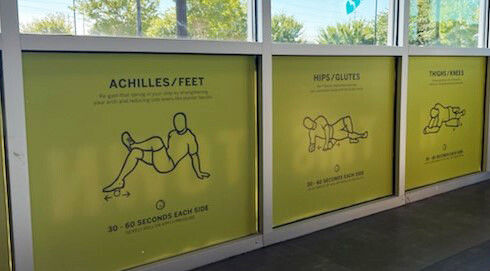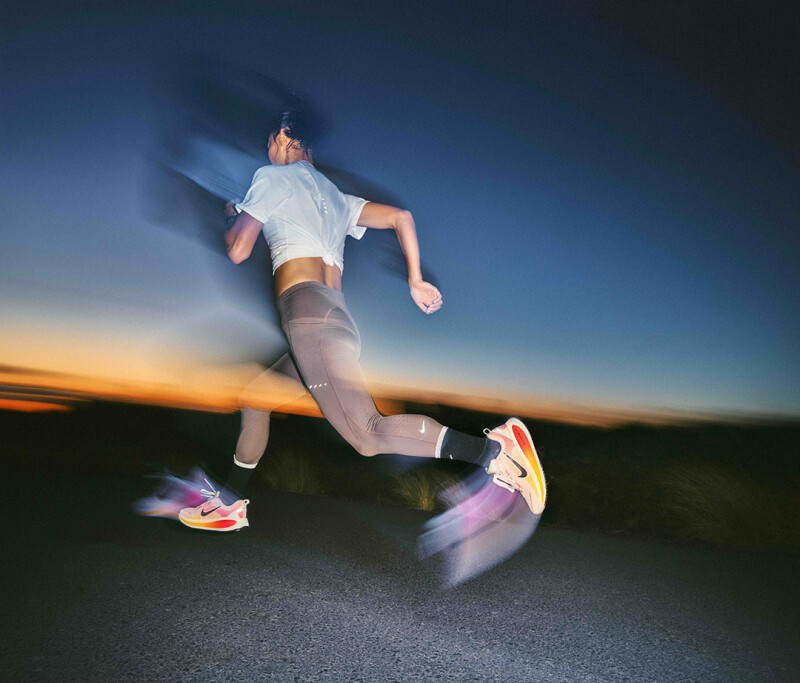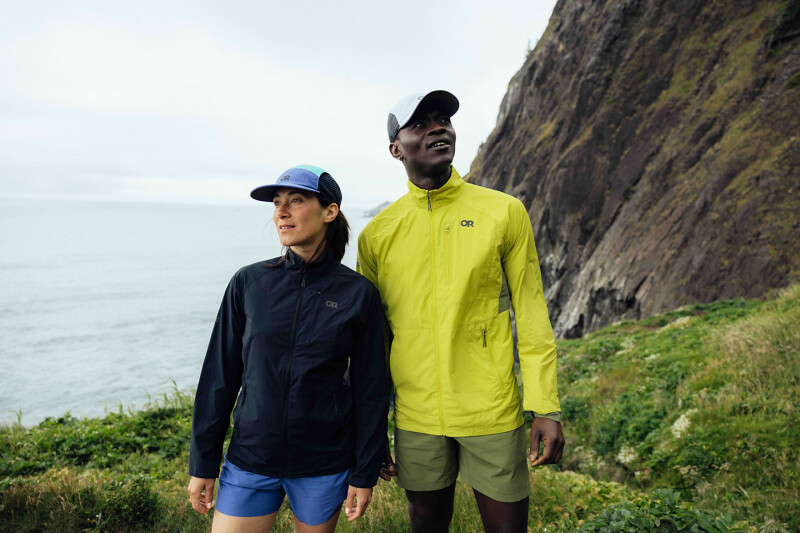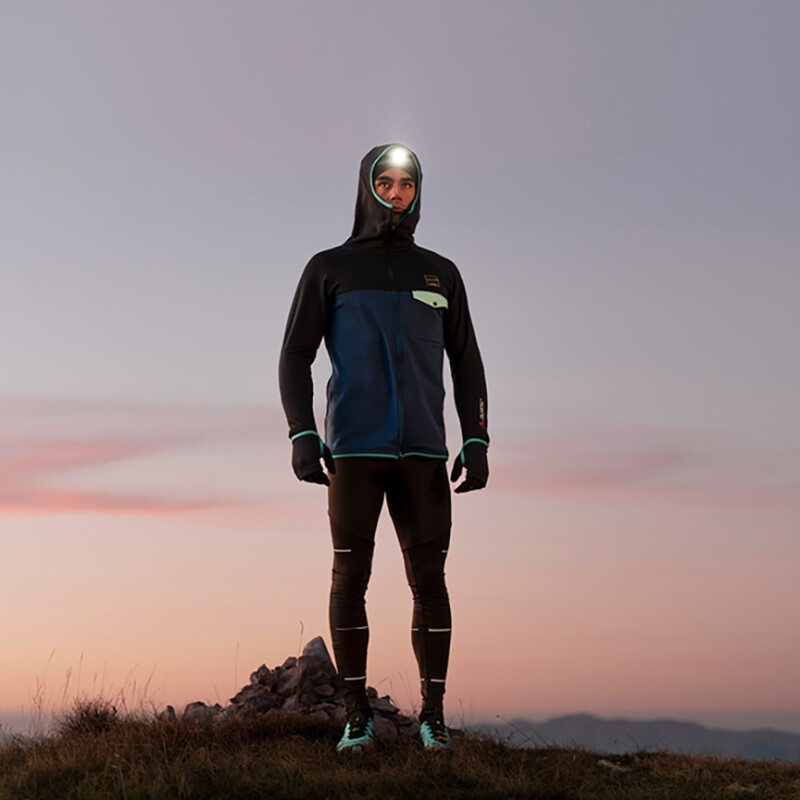F
our years ago, Emily Davis and her husband, Keith, owners of the Fleet Feet running shop in Winston-Salem, NC, looked into their store’s 1200-square-foot community room and brainstormed different uses for the large, underutilized space.
The couple arrived at a novel idea: create a “recovery zone” for customers to learn about and trial an assortment of recovery products. Over the years, the Davises’ recovery zone became an experiential showcase for recovery products such as rollers, sticks and percussive therapy devices (aka massage guns).
“Our goal was to let our customers experience recovery products just as they experience footwear,” Emily Davis says.
The idea of creating a recovery zone in running store showrooms has gained credence over recent years given the rise of the recovery category alongside accelerating consumer interest in healthier, more balanced and active lifestyles. Once limited to The Stick, a basic foam roller and a post-workout protein drink or two, the recovery category now includes a diverse collection of items, including massage guns, vibrating rollers, whole-body vibration devices, recovery boots, CBD products, recovery footwear and more.
“The recovery market has never been hotter,” Roll Recovery founder Jeremy Nelson says. “More and more people are learning the benefits of active recovery and taking care of their bodies.”
Championing Recovery, Capturing Sales
An in-store recovery zone – a concept capable of being replicated at races, expos and other out-of-store events, it’s worth noting – capitalizes on the experiential nature of many recovery items. Through hands-on use, customers can realize the effectiveness and value of recovery products for themselves.
“When trying things back-to-back you really get a sense of what works and what doesn’t,” Nelson says, adding that an experiential area gives independent retailers an edge over big-box and online stores where firsthand product testing and direct staff education is meager, if not wholly absent.
While there’s a strong case to be made for keeping recovery demo products near footwear where customers can quickly experience the tools while an associate grabs shoes during the sit-and-fit experience, the recovery zone doesn’t eliminate that strategy. In short, it’s not an either/or proposition.
Store associates can introduce recovery products into the fit experience and later guide customers into the recovery zone to address any pesky problems they might have identified while trying on footwear. Stores can also encourage customers to visit a recovery zone while waiting for their sit-and-fit experience to begin or use the space to host mini-seminars or workshops on recovery with store associates, vendor reps or external partners like a physical therapist.
A defined area spotlighting various recovery products and inviting trials adds value to the relationship running stores have with their customers. Yet more, the store-within-a-store concept offers the additional – and enticing – benefit of driving revenue while extending customer visits, heightening educational opportunities and deepening customer loyalty.
“If we can educate customers beyond shoes, socks and insoles, then we have a better shot to keep them active, moving, fit and happy,” Davis says.
So, how might a run shop create a lively recovery zone? Here are four real-life ideas for the road to recovery.
1. Help runners decompress with compression recovery boots.
Prior to COVID-19’s arrival, Fleet Feet in Syracuse, NY, created a recovery zone in its store anchored by two Normatec Leg air compression boots and two Zero-Gravity Chairs. While the pandemic compelled Fleet Feet Syracuse to dismantle its recovery zone, the store has repositioned one chair-and-boots setup in a large fitting room for private appointments.
“One thing about the boots is that they do require staff member setup and management,” Fleet Feet Syracuse marketing director Rachel Murphy reminds.
Customers can purchase a 30-minute slot with the Normatec Leg boots for $20, though the East Syracuse store also offers five and 10-session punch cards for $90 and $150, respectively. Murphy says appointment bookings accelerate around major marathons and are also popular after the store’s Sunday morning runs.
2. Energize the area with power-packed massage tools.
Power Plate has a history of creating “recovery zones” for health clubs and commercial dealers and the concept is slowing beginning to take hold in running stores, too, says Power Plate national account manager Paul Goldberg. While Power Plate’s whole-body vibration systems encourage post-run circulation and lymphatic drainage to accelerate recovery times, the brand also offers targeted vibration products like its Pulse and Mini+ percussive therapy devices, rivaling the offerings from brands like Pro-Tec, Therabody, Hyperice and Roll Recovery.
“The targeted/localized vibration allows the athlete to focus on key problem areas specific to them,” says Nick Goodman, Power Plate VP–mass retail and sales operations.
Power Plate’s charging station, meanwhile, positions three Pulse massage guns for ongoing use while the station can also charge the vibrating Power Plate Roller. Notably, the Pulse features an antimicrobial coating to reduce the spread of everyday germs and bacteria.
3. Roll out the rollers and sticks.
Foundational items in any recovery zone, rollers and sticks have long been used to increase circulation, ease muscle tension and expedite the recovery process. These “OG” recovery products are a must in any recovery zone and can easily be paired with next-level products like Pro-Tec’s AcuRoll, TriggerPoint’s Rush Roller and Roll Recovery’s R8 deep tissue massage roller].
At Fleet Feet Winston-Salem, the Davises’ recovery zone is lined with large graphics provided by TriggerPoint. The under-window posters feature information and examples on how to use TriggerPoint massage products for different areas of the body. The corresponding products are then available for immediate use.
4. Elevate the recovery zone by showcasing all recovery products.
Rollers, massage sticks, massage guns and recovery boots are the obvious products to fill a recovery zone, but the concept can be more, especially for stores with the space and desire to elevate the idea.
There is, of course, ample opportunity to line the recovery zone with additional recovery products available for purchase, such as compression calf sleeves, recovery footwear and sandals, CBD-infused ointments and recovery drinks, including single-use packages available for sampling, if not sale, and immediate consumption. Informational signage can help educate customers on the use and benefits of distinct products.
“Without bringing in new infrastructure, it’s certainly possible to enhance a recovery zone area with a mini-fridge stocked with water or a Nuun water cooler people could use,” Fleet Feet Syracuse’s Murphy says.
When Fleet Feet Syracuse operated its recovery zone pre-COVID, it created a Zen-like area with plants, which differentiated the area from the rest of the showroom. It was a successful, distinctive concept, Murphy says, and something store leadership has considered re-implementing.
“We’re constantly thinking about ways to enhance the experience people are having in our store and how we can deliver an elevated level of service and more opportunities for staff to educate customers,” Murphy says. “The recovery zone concept fit this and went with everything we do to help people move, feel good and prevent injury.”






